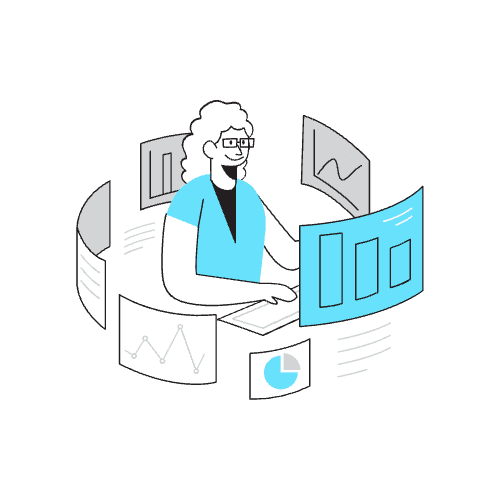
Roles and Responsibilities of Salesforce Business Analyst
Ready to elevate your career as a Salesforce Business Analyst?
Explore Salesforce Architect Responsibilities Across 4 Top Industries
8:00 AM - Morning Check-In
Daily Tasks:
- Review system alerts and data reports.
- Prioritize tasks based on deadlines and requests.
Peak Hours: Morning emails and requests surge.
Points of Friction: Managing unexpected ad-hoc requests.
10:00 AM - Requirements Gathering and Analysis
Daily Tasks:
- Meet with stakeholders to gather and document needs.
- Clarify project scope and goals.
Peak Hours: Back-to-back meetings with teams.
Points of Friction: Balancing competing priorities.
1:00 PM - Data Analysis and Reporting
Daily Tasks:
- Analyze CRM data for trends and insights.
- Build and share KPI dashboards.
Peak Hours: High-focus time for data review.
Points of Friction: Handling data inconsistencies.
3:00 PM - System Testing and Solution Validation
Daily Tasks:
- Test solutions and validate data accuracy.
- Ensure functionality aligns with project needs.
Peak Hours: Collaborate with developers and QA.
Points of Friction: Debugging complex issues.
5:00 PM - End-of-Day Review and Planning
Daily Tasks:
- Update project status and review task progress.
- Plan priorities for the next day.
Peak Hours: Sync with teams on milestones.
Points of Friction: Coordinating across time zones.

Unpacking the Key Obstacles and Their Impacts on Salesforce Business Analyst Task
Requirement Ambiguity
Challenge:
Gathering precise and comprehensive requirements can be difficult when stakeholders have unclear or conflicting needs.
Impact:
Misinterpreted requirements can lead to misaligned solutions, rework, and delayed project timelines.


Integration Complexities
Challenge:
Integrating Salesforce with multiple legacy systems and third-party applications can be complex and prone to issues.
Impact:
Integration failures disrupt data flow, hinder operational efficiency, and result in data silos.
User Adoption Resistance
Challenge:
Users may resist new processes or tools within Salesforce, especially if there’s a lack of training or perceived complexity.
Impact:
Low adoption rates reduce CRM effectiveness, underutilize features, and decrease ROI on Salesforce investments.


Data Privacy Compliance
Challenge:
Ensuring Salesforce configurations comply with evolving data privacy regulations (like GDPR, CCPA) can be challenging.
Impact:
Non-compliance can lead to legal consequences, financial penalties, and loss of customer trust.
Performance Optimization
Challenge:
Balancing system performance, particularly with large datasets or complex automations, requires careful optimization.
Impact:
Poor system performance impacts user productivity, customer satisfaction, and may lead to costly troubleshooting efforts.

